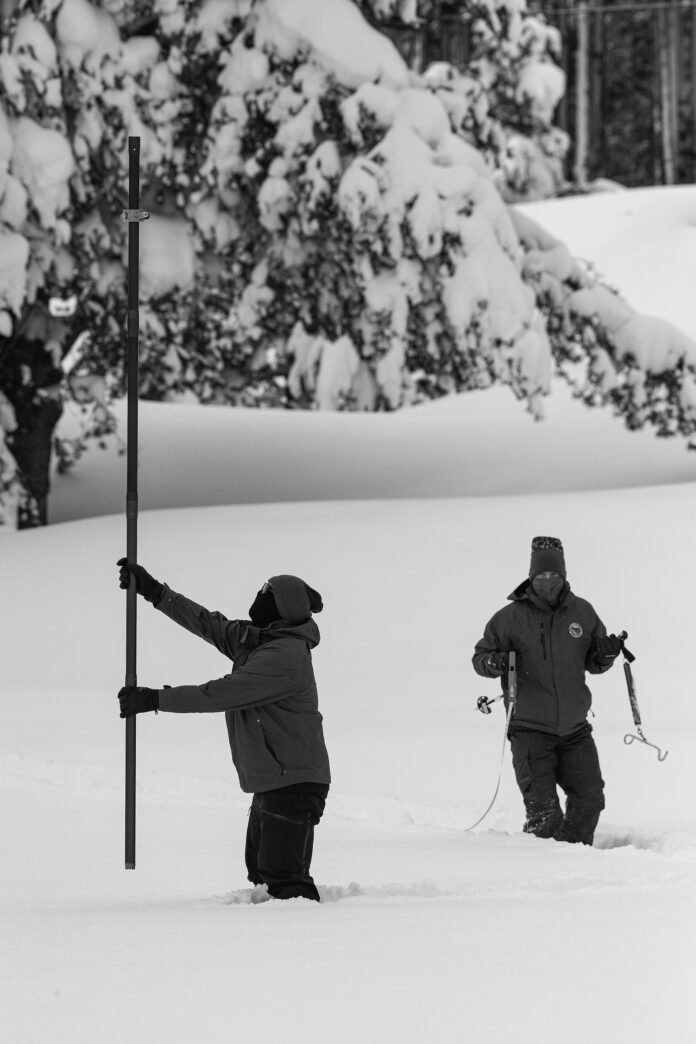
The 2021 winter storms that we experienced over the holidays and to close out the year were much appreciated as California enters its third consecutive year of drought.
The Department of Water Resources (DWR) conducted the first snow survey of the season at Phillips Station in the Sierra mountains on December 30, to measure the amount of water contained in the snowpack, which is a key component of DWR’s water supply forecast. December is the first of the three typically wettest months of California’s water year. Over the next couple of months as winter ends and spring sets in, the snowpack begins to melt and water that is not absorbed into the ground flows into mountain streams, which feed rivers and eventually aqueducts and reservoirs, where it can be stored for use during a drier season.
“We could not have asked for a better December in terms of Sierra snow and rain,” said DWR Director Karla Nemeth. “But Californians need to be aware that even these big storms may not refill our major reservoirs during the next few months. We need more storms and average temperatures this winter and spring, and we can’t be sure it’s coming.”
The rains were significant enough that DWR announced in January that it is increasing the State Water Project allocation from zero to 15 percent of requested supplies for 2022. Although DWR is making this allocation increase, it continues to plan for a third consecutive dry year because our wet December has been followed by a dry January.
As always, Orange County water agencies are prepared – whether we are blessed with a strong snowpack or not. The Orange County Water District (OCWD; the District), for example, manages a healthy groundwater basin, which provides 77% of the water supply to 2.5 million people in north and central Orange County. We implement a portfolio approach that utilizes multiple sources of water to ensure we are not solely relying on Mother Nature for our needs.
The basin holds billions of gallons of water from a variety of sources such as Santa Ana River flows, stormwater, imported water (from northern California and Colorado River), and recycled water from the Groundwater Replenishment System (GWRS). OCWD maintains one of the world’s most advanced aquifer recharge systems to replace the water that is pumped from wells belonging to 19 local cities and water agencies. As a direct result of our continued investments, the basin can provide water for two consecutive years at current pumping levels even if drought conditions persist.
And there is always room for more. As we experience recurring drought cycles, it is pertinent that Orange County water agencies continue to invest in locally-controlled, drought-proof water supplies to serve future generations. It’s our responsibility to evaluate all options to protect our water future, and rest assured, OCWD is leading the way. We are expanding water recycling at the GWRS, increasing stormwater capture at Prado Dam, exploring ocean water desalination, implementing new science and weather forecasting technologies, and also participating in multiple regional groundwater banking programs.
These investments safeguard our communities from the impacts of recurring drought and reduced supplies from northern California and the Colorado River, ensuring local and statewide water reliability for all.
This Orange County Water District article is provided by Tri Ta, mayor of Westminster and OCWD director of Division 4, serving Seal Beach, Los Alamitos and parts of Buena Park, Cypress, Garden Grove, Huntington Beach, Stanton, and Westminster. You can reach him at TTA@ocwd.com.
